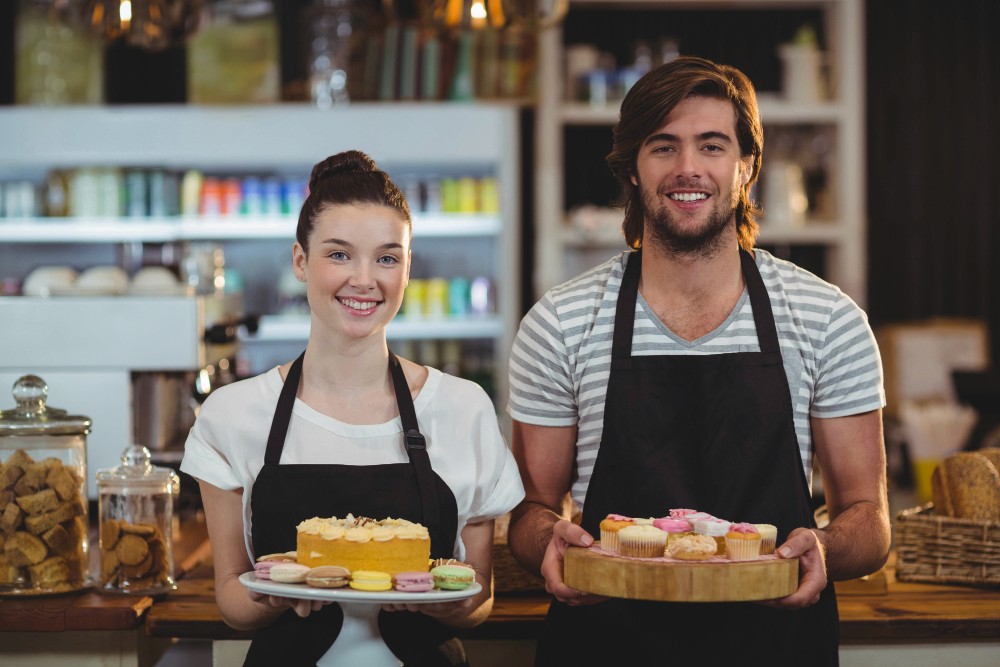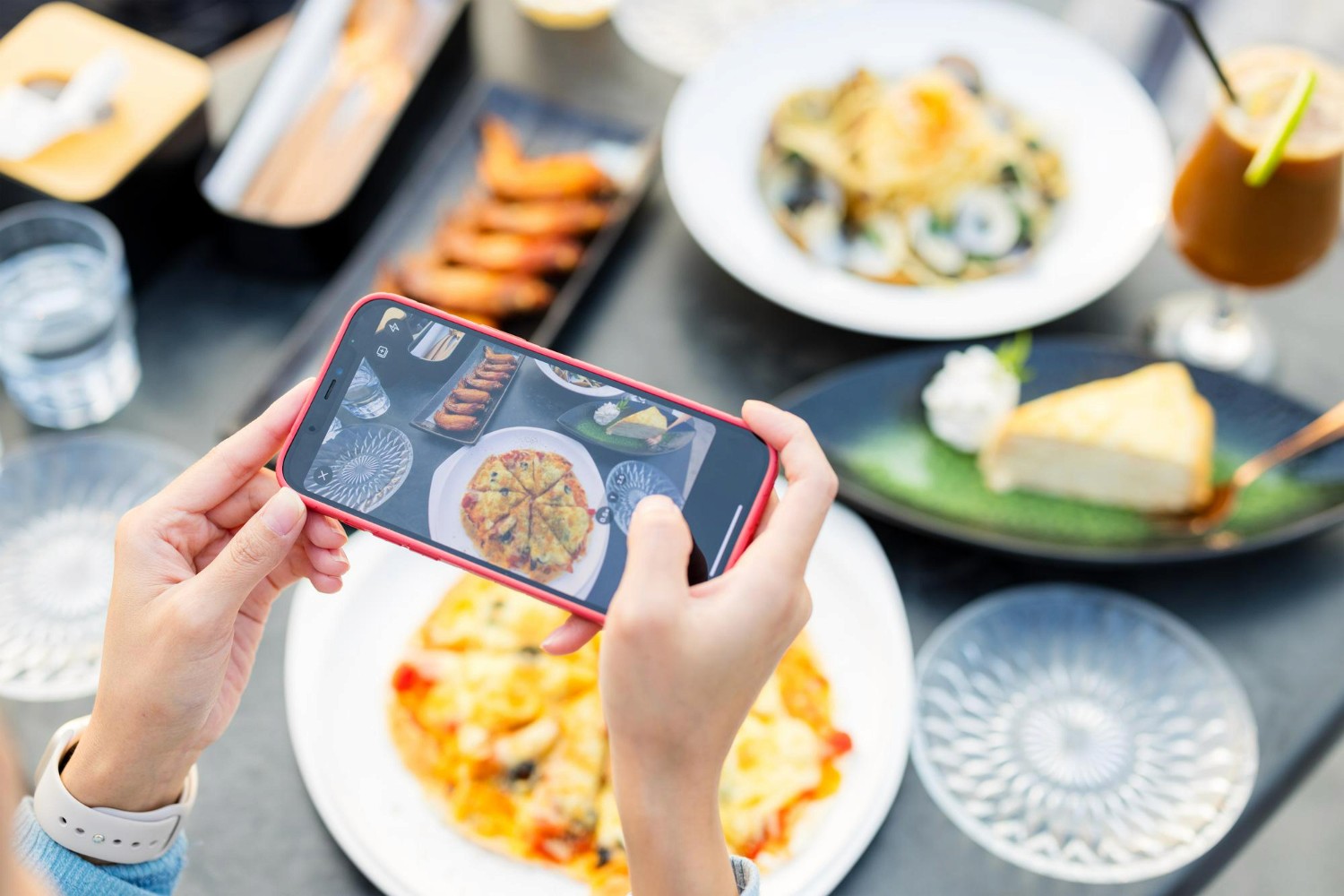One of the top ways businesses across industries and across the globe are speeding up their processes is using automation. The restaurant industry is no different, with restaurant marketing automation offering benefits for restaurants big and small, chains, and hotel restaurants alike.
Generally speaking, there are many types of technology used in the food service industry. From automating operations to improving inventory management, to automating elements in your restaurant’s marketing plan.
When it comes to marketing your restaurant, you should have a restaurant marketing strategy in place. This strategy should include the marketing automation tools you’ll be using for your restaurant or chain.
If you’re a hotel restaurant, make sure your restaurant marketing strategy is part of the hotel’s larger marketing strategy.
Keep reading to learn more about restaurant marketing automation, why it’s important, and the different types of automation you can use.
What is restaurant marketing automation?
Restaurant marketing automation is using different types of software and tools to automate processes in your marketing strategy.
Using these tools, you can automate many types of communication with guests and customers, including your marketing messages and offers. These tools also let you create personalized customer experiences on scale, which mean better guest experiences.
They can also help you increase customer retention in your restaurant or chain and improve customer engagement.
In other words, they help you send guests the right message at the right time for maximum benefit.
Why use restaurant marketing automation?
Automating a process means you no longer have to do repetitive tasks yourself.
Whether you’re a restaurant manager or owner, the marketing manager for a restaurant chain, or an F&B director at a hotel, you’ve got an endless to-do list. And a host of marketing tasks sit on that never-ending list.
With restaurant marketing automation, you can automate many of these marketing tasks and focus on your guests.
But what can automated marketing for your restaurant really do for you?
It can
– Save time on repetitive tasks
– Save money
– Collect data from your guest and use it to fuel your restaurant’s marketing strategy
– Segment guests and uncover your top visitors, top spenders,…etc.
– Create personalized guest experiences in your restaurant and online
– Run ads for your restaurant on platforms like Facebook, Instagram, TikTok, and Google
– Increase engagement with your customers and guest
– Build relationships with guests and increase loyalty and retention
– Manage guest surveys and use the data to improve your restaurant’s business operations
– Manage your marketing campaigns and measure the impact of each campaign
Types of marketing automation
One of the most common types of marketing automation for restaurants is email newsletters and campaigns.
They’re simple, can be personalized, and can generate great results when done well.
In this section, we’ll be looking at the different types of marketing automation and how you can use each of them in your F&B marketing strategy.
1. E-mail marketing automation
Email marketing remains one of the top ways brands stay top-of-mind, build authority, and build customer relationships.
The first step is to create a newsletter and get customers to sign up for it. Let guests answer a few questions so you can segment them into groups based on demographics, behavior, geography,…etc.
To automate your newsletters and email marketing campaigns, you can use software like HubSpot, MailChimp, and others.
Alternatively, you can use SerVme’s email marketing feature to craft enticing email subject lines and and create emails directly using SerVme’s guest profiles.
Further reading: Your Ultimate Guide to Email Marketing for Restaurants
2. SMS marketing automation
Using text messages remains a top marketing and automation method for many businesses. One reason for this is the high open rate for text messages.
You can use SMS marketing automation to send guests text messages soon after they leave to review their experience. Or you can let them know about an upcoming event or offer.
One way restaurants benefit from SMS marketing is to create quick customer surveys.
Data shows consumers check texts and respond to them faster than email. Roughly 45% consumers respond to a text message within 5-10 minutes of receiving it, while 32% reply within 1-2 minutes. Comparing SMS to email, nearly 33% of consumers say they “take a few hours to reply to an email.” (SimpleTexting)
Creating quick customer surveys is one of the top ways restaurants can benefit from SMS marketing automation.
Restaurants can also benefit from SMS marketing by confirming reservations. Similarly, restaurants can use SMS to notify customers of time-sensitive benefits like happy hour, or free dessert between 5-6 pm.
If you’re using SerVme’s restaurant management software, you can automate your SMS marketing from within the SerVme dashboard.
3. Influencer marketing automation
Influencers are quite popular in the food and beverage industry.
While different businesses have different goals when using influencers, the majority use influencer marketing “to drive sales.”
Nearly 74% of respondents in a survey by Influencer Marketing Hub say they “track sales from their influencer campaigns.” The most popular ways to track those sales is using “email addresses and referral links.”
4. Loyalty marketing automation
Creating customer loyalty means getting repeat guests and an uptick in your monthly and annual revenues. Repeat guests as customers who keep coming back to your restaurant.
Loyalty marketing automation usually comes in the form of a customer loyalty program. Using a restaurant loyalty program, you can create points and reward customers for being loyal to your brand or chain.
Top loyalty program providers include: Gameball, Antavo, Smile.io, and others.
5. Social media ads automation
One of the most popular types of marketing automation tools is social media marketing automation or ads automation.
With social media, you can use tools to schedule posts for your restaurant or to automate the ads creation process.
Social media marketing and ads automation are among the top restaurant marketing automation software businesses use. Tools include HubSpot, Convertedin, Sprout Social, among others.
You can integrate one or more of these tools with your restaurant technology stack or with platforms like SerVme.

How to use marketing automation for your restaurant?
Restaurant marketing automation forms a large part of your overall restaurant marketing strategy. In a way, we will cover some of your marketing strategy essentials here.
To figure out which market automation tools to use for your restaurant, you’ll need to answer a few questions or fill a few blanks.
1. Decide what you want to market
First, you need to decide what it is you want to market or inform customers about. This can be the opening of a new branch, a new restaurant in a hotel they frequent, or something else.
If you have many ideas you want to share, you can categorize these ideas into buckets, because you’ll need to create separate messaging for each.
2. What do you want guests to do
The next step is to decide what you want guests or customers to do when they see your marketing message.
Is it to visit your website? Check out your latest menu? Reserve a table? Increase walk-ins on Mondays and Wednesdays?
Remember: Each marketing message should have ONE call-to-action.
Don’t ask guests to check out your latest menu AND book a table.
Further reading: Increase Direct Restaurant Reservations on Facebook and Instagram with SerVme
3. List your branches
Before you automate your marketing messages, write down the number of branches—or restaurant concepts—you have.
If you manage multiple restaurant concepts, you’ll need to put these in several buckets as well.
4. Decide which platforms you’ll use
Now, it’s time to decide which platforms you’ll use to communicate with your guests. Platforms include social media, website, email marketing, SMS, among others.
You need to ask yourself – and answer – these questions:
Are you planning to use Instagram only? Or will you be using Facebook, Instagram, TikTok?
Are you going to use social media to drive traffic to your website? Are you going to create email marketing campaigns for your restaurant?
Is SMS marketing going to be part of your marketing efforts for this quarter or this year?
5. Determine which metrics to track
Once you’ve decided on your platforms, it’s time to determine which metrics you’ll be using to measure results.
If you’re using Facebook or Instagram (or both), you can get insights from the Facebook Business Manager. For X (formerly Twitter), you can find insights on the platform itself.
If you’re directing traffic to your website or getting guests to fill forms, you’ll need Google Analytics, Google Search Console, and the Facebook Pixel.
6. What type of content can you create?
Next, you’ll need to determine the types of content you’ll be creating across social media and your different platforms.
You can use marketing automation software tools like Canva to automate creating your GIFs, images, and some basic videos.
7. Determine which restaurant marketing automation tools you want
Now that you’ve determined what you want to post, where you want to post it, and the content you need, it’s time to pick your marketing automation stack.
There are tools for email automation, SMS automation, loyalty marketing, content creation, scheduling and posting, and more.
You can compare tools based on your needs and budget. Which tools you can use depends on what content you want to publish.
For example, if you’re planning to start with SMS marketing, you need a tool that automates sending text messages.
How SerVme helps restaurants
You should now have an idea of what you want to do, and which tools you want to explore to improve your restaurant marketing efforts.
But you’re probably wondering: How do I connect all these tools together?
The answer is using a restaurant customer relationship management (CRM) system. Not only does a restaurant CRM software help you gather guest data, but also lets you integrate with your POS system and restaurant marketing automation tools. That way, you can view everything from a single location.
Discover our list of the top POS systems for restaurants and F&B operations
SerVme is a reservation management and CRM software for restaurants, chains, and hotel restaurants. You can use SerVme’s built-in email marketing and SMS marketing automation tools without having to integrate with external email software.
If you already use email software, you can integrate it with SerVme to use your guest data and send segmented email campaigns to your customers.
SerVme’s CRM comes with the top features of a restaurant management system such as seating management, floor plan design, and guest analytics.
You can use SerVme to choose which customer analytics you want to measure in your restaurant, compare analytics between branches or locations, and more.
Wrapping it up
Marketing involves a lot of experimentation and restaurant marketing automation tools can help you speed up the testing phase. Not to mention, improve many of your restaurant’s current and future marketing operations.
Like with any marketing effort, you need to see what works and what doesn’t.
Do guests feel comfortable sharing their phone numbers and receiving text messages from your restaurant? Are guests opting out of your newsletter? Are you sending too many emails? Are you using guest segmentation so your emails don’t go to everyone?
Marketing is about asking questions and experimenting. Restaurant marketing automation helps you get there faster with branded content, sleek designs, and more.
If you want to see how marketing automation combined with powerful restaurant management system features can do for you, check out serVme. We work with restaurants of all sizes, hotel restaurants, and F&B chains and enterprises.
Mohammed Rafy
Marketing



